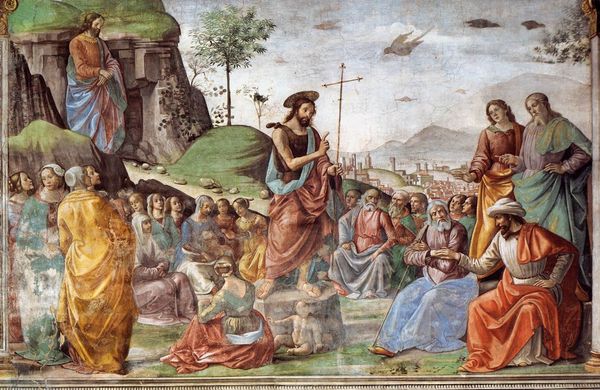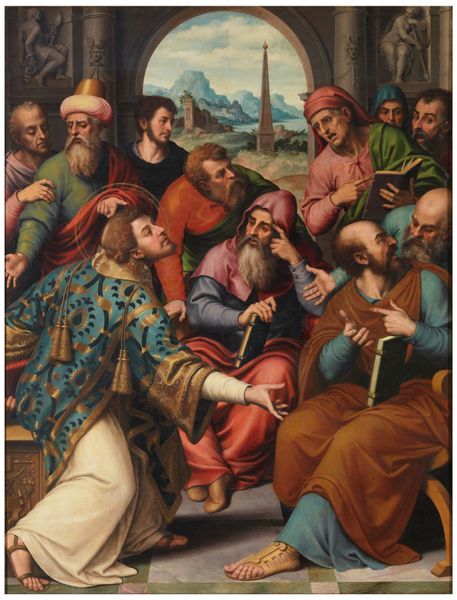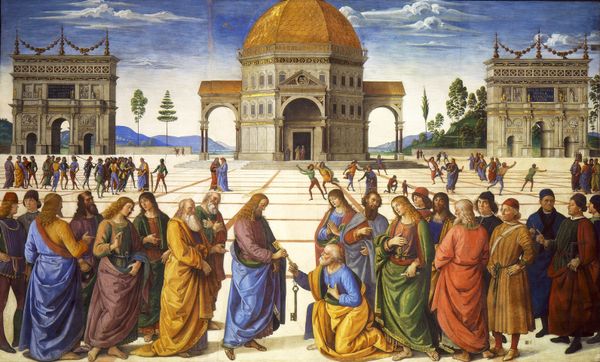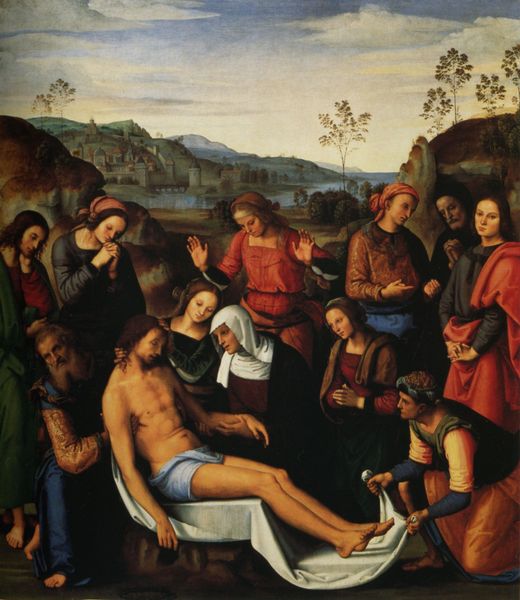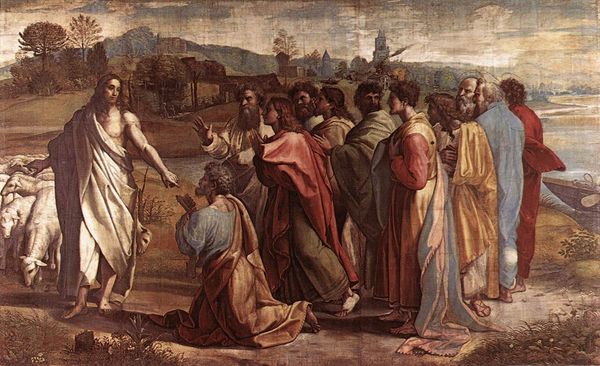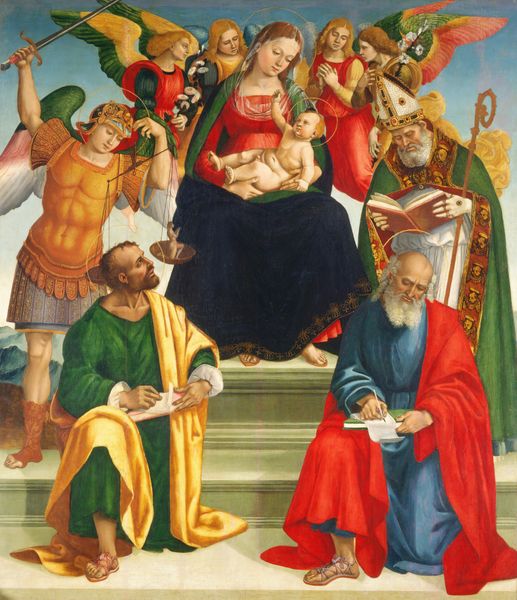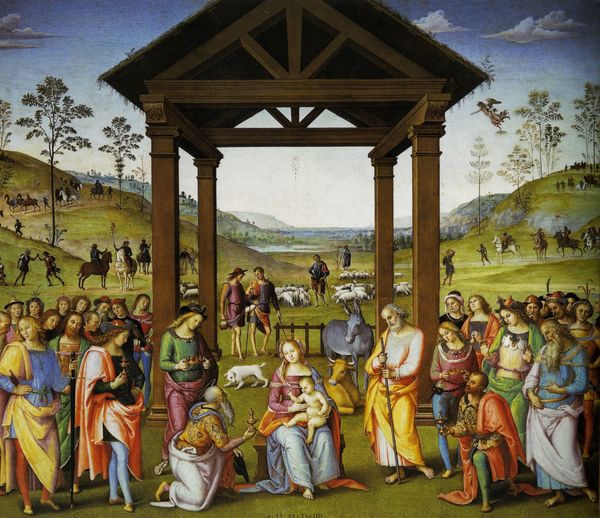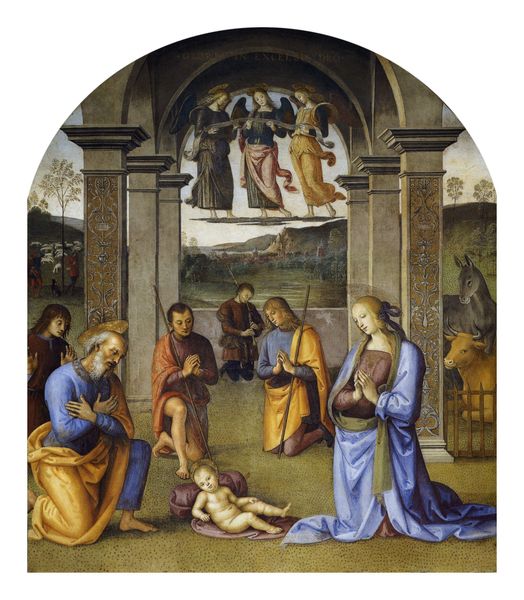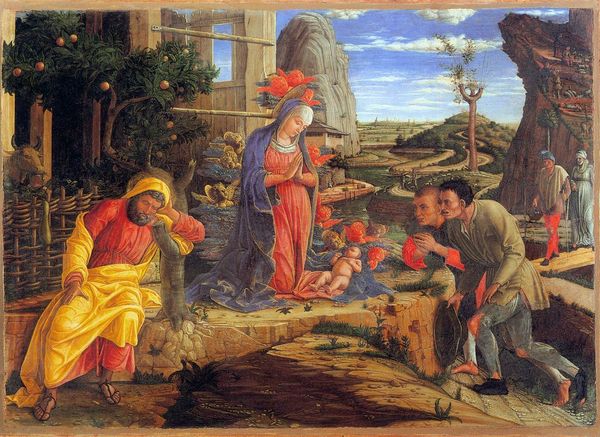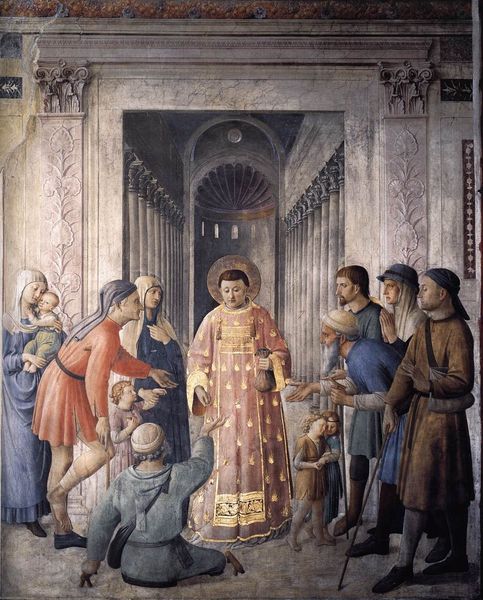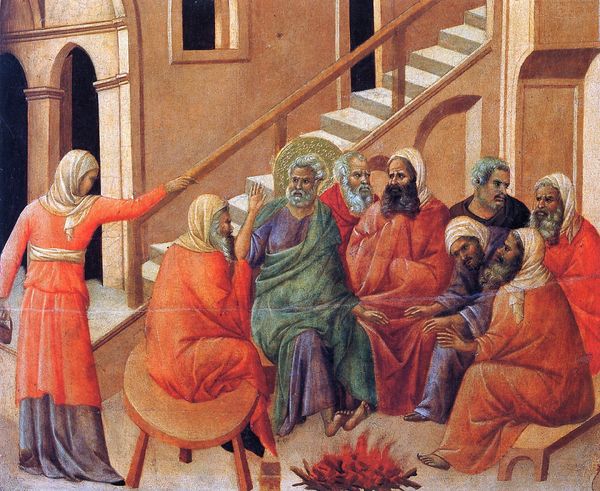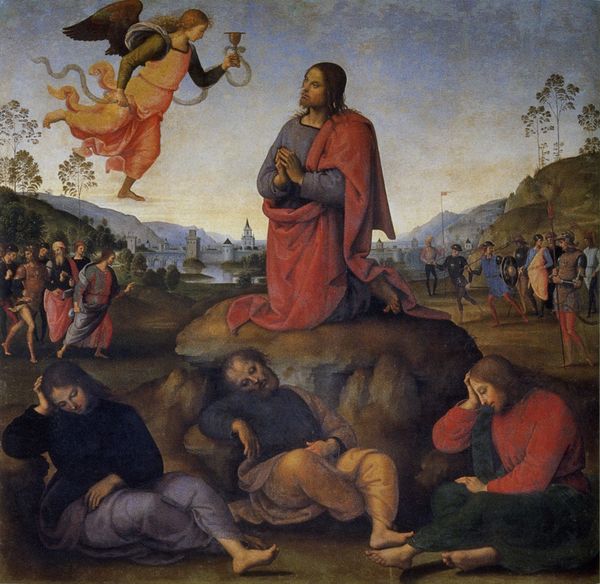
painting, oil-paint, fresco
#
portrait
#
high-renaissance
#
narrative-art
#
painting
#
oil-paint
#
landscape
#
figuration
#
fresco
#
oil painting
#
italian-renaissance
Dimensions: 26 x 52 cm
Copyright: Public domain
Raphael painted "Saint John the Baptist Preaching," on a wood panel in the early 16th century. It represents the social and religious conventions of Renaissance Italy, particularly the importance of religious figures and their teachings. The image uses visual codes to convey meaning; Saint John is set apart from the crowd, elevated on a small hill and dressed in distinctive robes, emphasizing his spiritual authority. Painted in Florence, Italy, where the Catholic Church was a dominant institution, the painting subtly reinforces the Church's teachings and social hierarchy. It also reflects the progressive ideas that developed with the Renaissance: the artist pays close attention to representing human figures realistically while referencing classical art and architectural design through linear perspective. Understanding this work involves looking at historical texts and religious studies, and understanding the complex interplay between art, religion, and social power in Renaissance Italy. The meaning of this painting is contingent on this historical context, highlighting the historian's role in interpreting art.
Comments
No comments
Be the first to comment and join the conversation on the ultimate creative platform.
